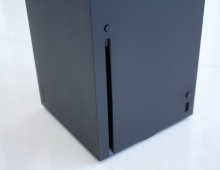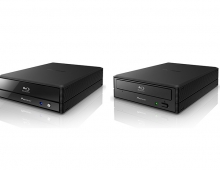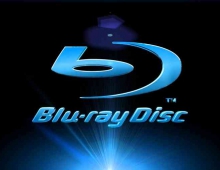
DaTARIUS DaTABANK Reads BD-ROM Mark
DaTARIUS' reference tester for electrical signals, the DaTABANK,
is now also acts as a BD-ROM Mark Analyzer for the BDA/Philips?
Blu-ray Discs.
BD-ROM Mark disc technology was developed by Philips, Sony and
Panasonic.
The BD-ROM Mark technology is part of the content protection method developed by AACS for Blu-ray. DaTARIUS systems are equipped Philips' Pit O?Resc board that enables the DaTABANK to act as a BD-ROM Mark Analyzer.
"Both BD stamper and replica can be analyzed to define whether the ROM Mark is correctly inserted," says Dr. Andrew Dumbill, CTO DaTARIUS Group.
The BD-ROM Mark is a physical mark put on the master during the encoding, and which is replicated on every disc made from that master. The BD-ROM Mark enables heavy encryption and is implemented specifically such that it is impossible to replicate or copy it. BD-ROM players are equipped with a BD-ROM detector that will only allow the playback of a disc if a Mark is found and correctly decrypted.
"Reliable support for BD-ROM Mark verification is essential to enable flawless quality of Blu-ray Discs in the consumer market," says Rob Woudenberg from Philips.
About Philips' Pit O?Resc platform and BD-ROM Mark
The Blu-ray Disc Association has developed content protection solutions with a physical mark called BD-ROM Mark, which is expected to provide an effective solution to the problem of piracy at both the consumer and professional levels.
The "payload" of the mark is a 128-bit key, without which the encrypted content on the disc cannot be decrypted. The effectiveness of the BD-ROM Mark is based on the fact that it cannot be copied by disc recorders.
The BD-ROM Mark can only be applied using equipment available to licensed BD-ROM disc manufacturers.
Using its experience with the concept of a physical mark earlier with Super Audio CD, Philips offers the Pit O?Resc platform solution. The platform acts like an inserter of the BD-ROM mark to BD-ROM discs, and it will be available to mastering equipment manufacturers. In addition, its acts as a detector of the ROM Mark for use in chipsets for BD players and PC drives.
For verification of the correct BD-ROM Mark, a Pit O?Resc-based analyzer (part of the DaTARIUS DATABANK system) is available to verify that the mark has been correctly inserted. To allow easy process adjustments, an encoder function is available to record the physical mark with different parameters (a so-called stepper disc). Together with the BD-ROM Mark analyzer, this provides instant insight into the optimum mastering/replication parameters for inserting the BD-ROM Mark onto BD-ROM discs.
The BD-ROM Mark technology is part of the content protection method developed by AACS for Blu-ray. DaTARIUS systems are equipped Philips' Pit O?Resc board that enables the DaTABANK to act as a BD-ROM Mark Analyzer.
"Both BD stamper and replica can be analyzed to define whether the ROM Mark is correctly inserted," says Dr. Andrew Dumbill, CTO DaTARIUS Group.
The BD-ROM Mark is a physical mark put on the master during the encoding, and which is replicated on every disc made from that master. The BD-ROM Mark enables heavy encryption and is implemented specifically such that it is impossible to replicate or copy it. BD-ROM players are equipped with a BD-ROM detector that will only allow the playback of a disc if a Mark is found and correctly decrypted.
"Reliable support for BD-ROM Mark verification is essential to enable flawless quality of Blu-ray Discs in the consumer market," says Rob Woudenberg from Philips.
About Philips' Pit O?Resc platform and BD-ROM Mark
The Blu-ray Disc Association has developed content protection solutions with a physical mark called BD-ROM Mark, which is expected to provide an effective solution to the problem of piracy at both the consumer and professional levels.
The "payload" of the mark is a 128-bit key, without which the encrypted content on the disc cannot be decrypted. The effectiveness of the BD-ROM Mark is based on the fact that it cannot be copied by disc recorders.
The BD-ROM Mark can only be applied using equipment available to licensed BD-ROM disc manufacturers.
Using its experience with the concept of a physical mark earlier with Super Audio CD, Philips offers the Pit O?Resc platform solution. The platform acts like an inserter of the BD-ROM mark to BD-ROM discs, and it will be available to mastering equipment manufacturers. In addition, its acts as a detector of the ROM Mark for use in chipsets for BD players and PC drives.
For verification of the correct BD-ROM Mark, a Pit O?Resc-based analyzer (part of the DaTARIUS DATABANK system) is available to verify that the mark has been correctly inserted. To allow easy process adjustments, an encoder function is available to record the physical mark with different parameters (a so-called stepper disc). Together with the BD-ROM Mark analyzer, this provides instant insight into the optimum mastering/replication parameters for inserting the BD-ROM Mark onto BD-ROM discs.





















